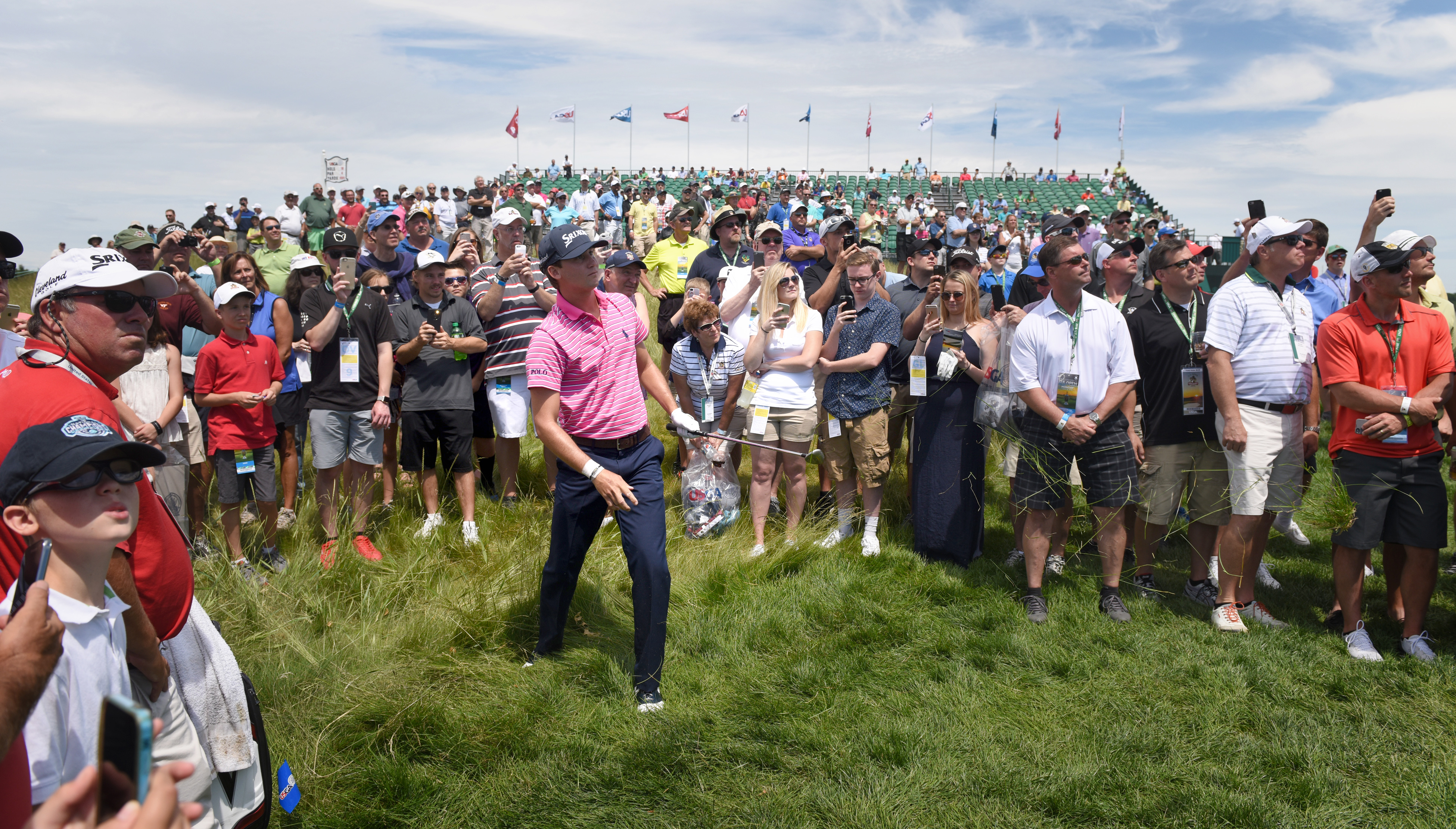On its longest day, the par-4 17th hole at Oakmont Country Club measures 313 yards, easily within reach of most of the longest drivers in the field at the U.S. Open.
On its shortest days, it will play 277 yards, which means it will actually be shorter than the par-3 eighth hole at Oakmont when the tees are stretched to 288 yards — or, on maybe one or two days, 300 yards. At that length, the hole will tease, tempt and beguile all 156 players in the field, daring them to take a shot as if it’s an arcade game at Kennywood.
But there is nothing easy about No. 17, despite its shortish length. It plays uphill to a green about as shallow as a license plate, with a 10-feet deep sand bunker fronting the putting surface. The bunker is known around Oakmont, appropriately, as “Bigmouth,” and from a standing jump LeBron James might have a tough time laying a ball on the green from the bottom of the hazard.
“You don’t want to be in there,” said Dustin Johnson, one of the game’s long hitters, who said he will lay up on the hole. “It’s too tough.”
Actually, Phil Mickelson’s plan in 2007, the previous time the U.S. Open was at Oakmont, was to purposely drive the ball in Bigmouth, but only when the pin was back right. When the pin was middle to front left, he would try to hit his tee shot in the left greenside rough, creating the perfect angle to enter the putting surface.
Jordan Spieth, the defending champ, has a similar plan, no matter where the pin is located.
“I like driver,” Spieth said. “That right bunker, I hit from all different parts of it to all different pins and felt like if I hit the shot I’m capable of out of that bunker, I was left with a birdie chance that would require two really solid shots from a layup and a really solid wedge just to get to that point.”
No matter what course of action a player chooses, whether it’s to attack with a driver or lay back with a medium-iron and take your chances with a lob wedge, the 17th hole is predictably bound to have an impact on the U.S. Open. It always does.
Phil Rodgers made an 8 there in the 1962 U.S. Open when his tee shot got entangled in one of the pine trees on the left side of the fairway — trees that are no longer there. Rodgers took three baseball swings to dislodge the ball, and his quadruple-bogey is the reason he missed joining the playoff with Jack Nicklaus and Arnold Palmer by two shots.
Ben Hogan drove the green when he won the U.S. Open in 1953. So did Palmer in 1962, making eagle. Nicklaus did it twice, in 1962 and 1973. Ernie Els didn’t drive the green — he missed it badly to the left — but he was given a fortuitous, albeit correct, drop from the grandstand in the final round of the 1994 U.S. Open, allowing him to salvage par. Jim Furyk tried to drive the green in the final round in 2007, made bogey and lost by one to Angel Cabrera.
“I’m going to lay it up,” Johnson said. “If you miss the green, the green is pretty narrow and it’s really tough to get up and down. I feel like with a wedge from the fairway, I’m going to be able to hit it closer a majority of time than from one of those bunkers.”
Jason Day hit a driver during a practice round Monday and missed the green to the right. But he, too, said he would probably use an iron off the tee once the tournament begins. In fact, if the course doesn’t get soft, Day said it is possible he will use an iron off the tee on 10 of Oakmont’s holes — 1, 2, 3, 5, 9, 10, 11, 14, 15 and 17. And he and Johnson are two of the longest players on the PGA Tour.
“It depends on the weather and the conditions of the golf course,” Day said. “That’s one out of the three drivable par 4s that’s probably the most comfortable drivable-par 4 that you have on the golf course.”
Even if there is nothing comfortable about it.
Gerry Dulac: gdulac@post-gazette.com and Twitter @gerrydulac.

Comments
Login Register Logout